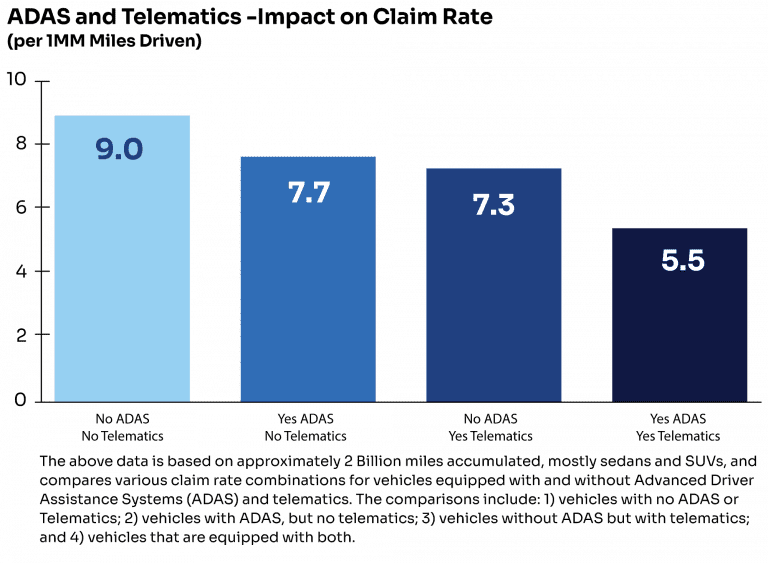Blog Post
Beyond Safety Training: Five Steps You Can Take to Ensure Better Driving Habits and Your Drivers’ Safety
By John Wuich
November 21, 2024

Driver training may come from various sources and serve several purposes. With vehicle technology advances, training provided by the dealership may work to ensure a driver effectively uses these features to safely operate the vehicle. Where specialty vehicles are used, training may work to ensure a driver knows how to effectively use the vehicle to safely perform the job function. Further, fleet driver training may include access to corporate safety policies and acknowledgement of his or her role in safety – from knowing the rules on cell phone use while driving to adhering to maintenance and inspection procedures. Additionally, drivers may be educated on safe driving strategies, including defensive driving techniques.
If you are providing training in any or all the forms described above, yet your fleet accident and claim rates continue to trend in the wrong direction, it may be time to look at rounding out your fleet safety program with additional, strategic features. Following are five additional steps you may want to consider to ensure better driving habits and increased safety for your drivers.
- Know your drivers and understand how they are using their vehicles: Be aware that your risk exposure extends beyond driver assigned vehicles and out to any driver in any vehicle on business use. This includes personal vehicle and rental car use.
Additionally, where your policy allows for personal use of an assigned vehicle, your exposure may extend to driver and family member personal use. To put this into perspective, for drivers reporting business and personal (B&P) mileage within the Wheels portfolio, data suggests that while about 16% of miles accrue on personal time, about 29% of claims involving a driver occur on personal time. This statistic may be surprising, and there may be valid reasoning for the variances between reported personal use and accidents outside of business use. Recognizing this variance may be an opportunity to adjust policy, extend training, or both.
- Written Policy that is acknowledged: A policy sets a baseline for clear and consistent vehicle operation expectations. Driver acknowledgement of your policy goes a step further by working to place accountability with that driver. Establish procedures that ensure all eligible vehicle drivers have received, read, and understand the policy. This may mean requiring a signed acknowledgement and even a policy quiz or test.
- Vehicle Selection and ADAS vehicle features: Technology defined as advanced driver-assistance systems (ADAS) work to assist drivers with the safe operation of a vehicle. ADAS features are shown to increase vehicle and passenger safety. Examples of ADAS features include sensors and cameras used to detect nearby obstacles, forward collision warnings, and automatic emergency braking. ADAS can enable various levels of autonomous driving. While ADAS are optional features in many fleet vehicles today, these features are expected to become more standard in coming years.
- Active Fatigue and Distraction Detection (AFDD): Driver fatigue occurs when tiredness impairs one’s ability to drive. Distracted driving occurs when a driver engages in activities that pull attention away from the road. Both are shown to increase risk to the driver, passengers, occupants of other vehicles, and pedestrians. AFDD technology works to assess a driver’s state of fatigue and distraction by monitoring measures such as eye gaze, eye closure, sight direction, sight positioning, and steering patterns. In-vehicle sounds alert the driver and correct behaviors.
- Use Telematics to Monitor and Manage Driver Behaviors: Telematics provides in-vehicle monitoring of driver behaviors commonly linked with accident claims and severity. These behaviors include quick accelerations, harsh stops, driving over the posted speed limits, and failure to wear a seat belt. Analytics have shown that monitoring and managing these driver behaviors can work to reduce accident claims. Combined with optional ADAS safety features, the results become even more powerful, as the chart below illustrates.

Conclusion
External research indicates that 90% or more of all motor vehicle crashes result from human behaviors. Driver safety training is a part of most basic safety programs and can work to reduce risk and improve driver behind-the-wheel behaviors. Beyond common safety program components, there are steps you can utilize to reduce crash rates and severity. These steps include knowing your drivers and their driving patterns, requiring formal acknowledgement of a written fleet policy, utilizing optional ADAS and AFDD safety features, and combing safety features within vehicle telematics data.
For further safety program guidance and for questions about this article, contact Wheels at 1.800.477.2211.

Sr. Data Strategist,
Client Analytics